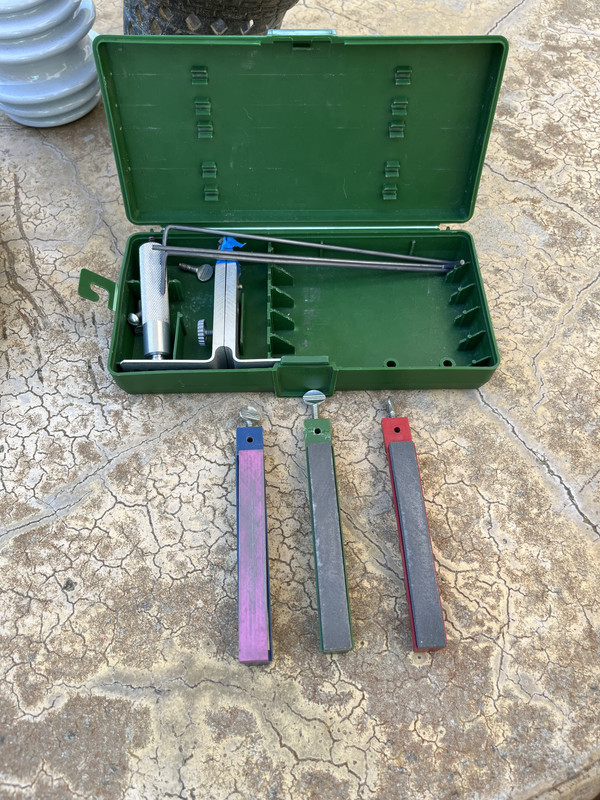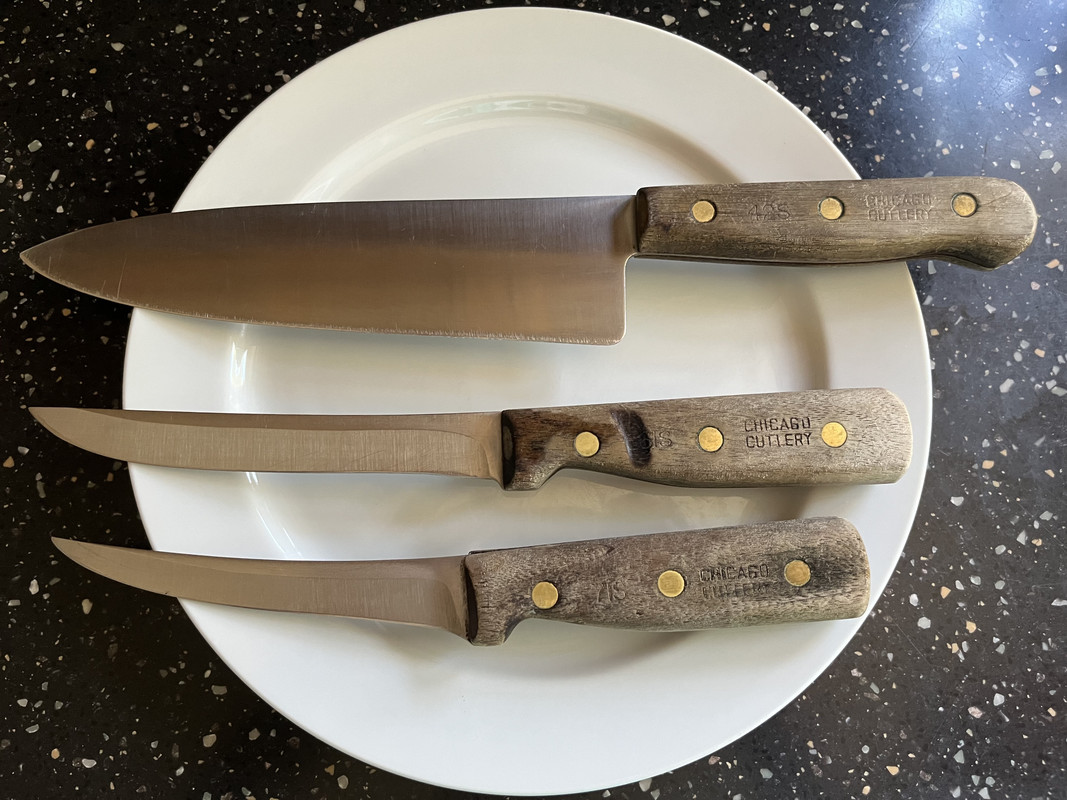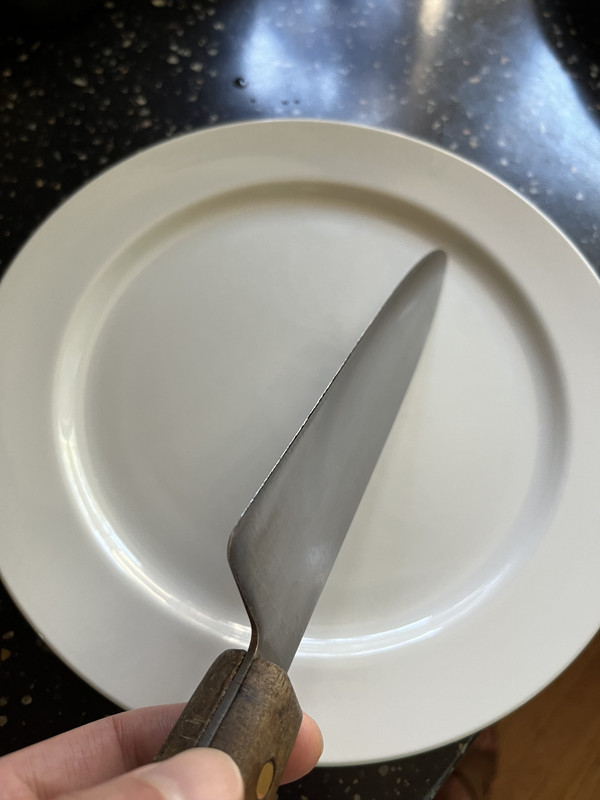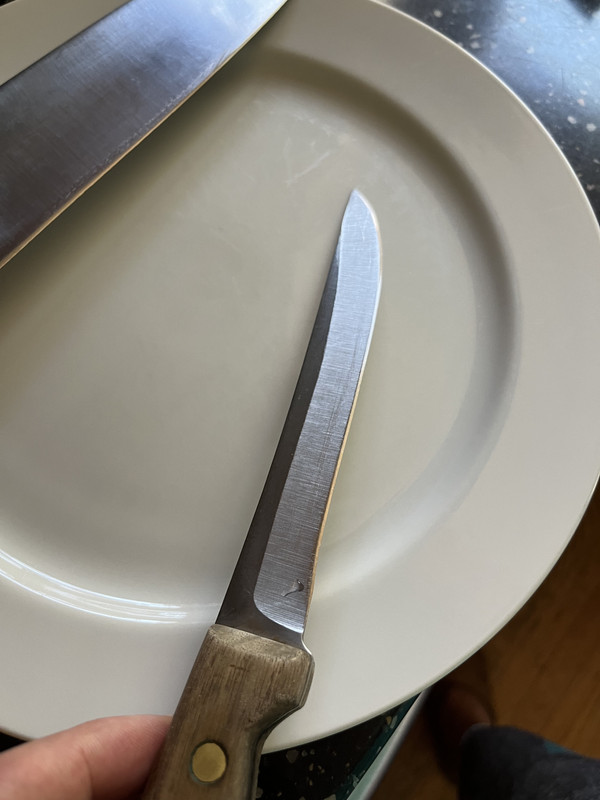- Joined
- Sep 8, 2022
- Messages
- 4
Hello Blade Forums!
I recently decided to try and sharpen my kitchen knives. I came across Project Farms video on YouTube where he compared different sharpening systems and I decided to purchase a Lansky. I thought that as a newb a guided system would be easiest to start with.
After reading some reviews, I realized that Lansky had changed manufacturers from US to Asia and I decided to buy a used USA made kit off of eBay.

The kit I got is only the 3 stone and did not come with honing oil.
I have a variety of old but nice kitchen knives from Wüsthof and Chicago Cutlery. I decided to start with the Chicago Cutlery knives and I only tried to sharpen 3 of them.

The results I got are quite poor; yes the knives are sharper but they are no where near a new blade edge.
I also experienced chipping of the blade edge. Especially on the large chef’s knife model (42S).

I sharpened the 42S in the 25 degree slot.
The 61S in the 20 degree slot (best result of the three but still not perfect).
And the 71S in the 17 degree slot.


Any advice on what I am doing wrong?
Do I need honing oil?
Is the Lansky the wrong tool for this job?
Any advice is greatly appreciated, I am new to this and can use all the guidance I can get.
Thank you!
I recently decided to try and sharpen my kitchen knives. I came across Project Farms video on YouTube where he compared different sharpening systems and I decided to purchase a Lansky. I thought that as a newb a guided system would be easiest to start with.
After reading some reviews, I realized that Lansky had changed manufacturers from US to Asia and I decided to buy a used USA made kit off of eBay.

The kit I got is only the 3 stone and did not come with honing oil.
I have a variety of old but nice kitchen knives from Wüsthof and Chicago Cutlery. I decided to start with the Chicago Cutlery knives and I only tried to sharpen 3 of them.

The results I got are quite poor; yes the knives are sharper but they are no where near a new blade edge.
I also experienced chipping of the blade edge. Especially on the large chef’s knife model (42S).

I sharpened the 42S in the 25 degree slot.
The 61S in the 20 degree slot (best result of the three but still not perfect).
And the 71S in the 17 degree slot.


Any advice on what I am doing wrong?
Do I need honing oil?
Is the Lansky the wrong tool for this job?
Any advice is greatly appreciated, I am new to this and can use all the guidance I can get.
Thank you!
